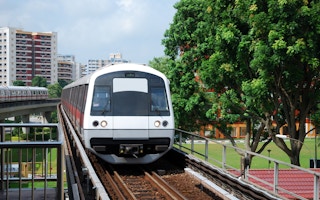Singapore is undoubtedly a small country with few resources – and it is only getting more crowded. The National Population and Talent Division reported that as of June 2013, Singapore’s population currently stands at 5.4 million, whereas four years ago, the local population was under five million.
Traffic congestions, rising healthcare costs, rapid urbanisation – they are all unfortunate consequences of an expanding population, which increases energy demand. As the economic hub of Asia, to compensate for this burgeoning number, Singapore must consider sustainable solutions and a ‘Smart Community’ may just be the perfect fit.
What is a Smart Community?
A ‘Smart Community’ is a term that is often thrown about, but often left undefined. In a nutshell, a smart community is one that strikes a balance between environmental considerations and comfortable living, and can be summed up by three major pillars:
- Energy solutions, from power generation to efficient distribution and usage;
- Healthcare information technology (IT) solutions that support the growing population; and,
- Data storage solutions that support big data.
Energy solutions
Imagine living in a smart home. While you are at work, energy stored from Singapore’s blazing sun rays gets converted into energy that can power your home when you return later that evening. This smart home can even automatically sense which space you are inhabiting, and effectively distribute energy there, instead of the area you just left. Meanwhile, your daily mode of transportation, an electric vehicle, would be charged wirelessly while it is at its designated parking area as you go about your house, making it ready for tomorrow’s day out with your family. All these are just a tiny fraction of what an Energy Management System (EMS) can do.
“
In Singapore, the local government has been actively supporting a sustainable social infrastructure for its people. For instance, SMRT is working with Toshiba to install their Permanent Magnet Synchronous Motor (PMSM) technology in existing 66 SMRT trains, which will effectively reduce 30 per cent of energy consumption
Now imagine this on a slightly larger scale – three core systems, each located within homes, buildings and communities, working in tandem to provide a coherent energy efficiency solution for the future.
In fact, there are several city-scale projects currently used as a proof of concept. In one of the largest smart city demonstration projects in Japan, the Yokohama Smart City Project (a project that the city is working closely with Toshiba) aims to build a social system that reduces CO2 emissions by 30 per cent. With a combined area of around 60 square-kilometres and a population of more than 420,000 people in 170,000 households, the project will demonstrate energy management and demand response across a wide area, supported by the three core EMS.
In Singapore, the local government has been actively supporting a sustainable social infrastructure for its people. For instance, SMRT is working with Toshiba to install their Permanent Magnet Synchronous Motor (PMSM) technology in 66 existing SMRT trains, which will effectively reduce 30 per cent of energy consumption. It generates less heat and noise, and as a result, would require less maintenance. Although its scope is small in comparison to the Yokohama project, it is a giant leap towards a sustainable future in Singapore.
Healthcare IT
Medical data is collected every day from patients undergoing healthcare. What if medical data regarding their past, present and even future can be compiled into a database and can be viewed anywhere over a vast computer network, allowing medical professionals to offer diagnosis and treatment that are not only appropriate, but also highly safe and efficient?
By allowing medical staff to share data and collate their strengths, medical facilities will be able to offer top of the line treatment. Integrating these large amounts of data from big hospitals to neighbourhood clinics into a single network will allow digital medical information to be shared and give each patient the best medical attention.
Data storage
At the heart of the first two pillars, lies a central infrastructure to receive and send out a rapidly increasing amount of data accurately.
As a result, the data centres responsible for processing and storing this information have become a vital part of social infrastructure. They demand that storage solutions must be of high capacity and high speed. With the increasing amount of data, power consumption has also continued to increase and energy conservation has become a priority. Operating the data centres will become more complicated in the future as the requirement to flexibly and reliably handle unpredictable fluctuations in the amount of data increases.
A modular data centre could be a viable solution to this. By merging the strengths of traditional data centres with container-type models, a modular data centre is both durable and enjoys reduced construction costs and time, with the added convenience of flexibility for expansionary purposes.
The Nanyang Technological University, working alongside Tobhsiba, currently has two such solutions in place, both of which are at a pilot implementation stage since last year. It is a live project that aims to combine the effectiveness of a modular data centre with outside air cooling technology. The results have also proved to be a success, effectively reducing energy consumption by an approximately 30 per cent. Think about what this could mean for Singapore if this was applied island-wide.
Being a key economic hub in Asia, Singapore must continue to innovate and lead the charge for the rest of the region, and these local examples are small but monumental steps towards creating a sustainable community in Singapore. If it continues on this trajectory, Singapore might very well fulfil its namesake as a clean and green city.
Fumio Otani is the managing director of Toshiba Asia Pacific Pte Ltd.

















